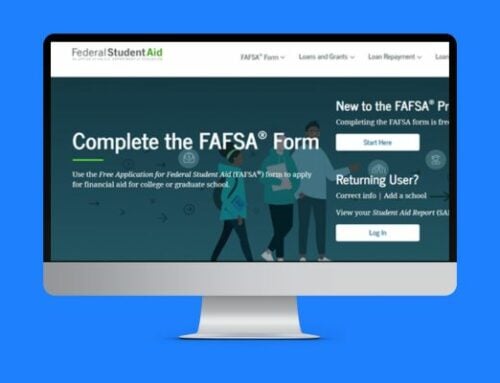College Bound – Junior Year Checklist
A student’s Junior year in high school is arguably the most critical year for college preparation. It’s the last full year of information a college will evaluate when making their decision. This is the year the student needs to shine academically, be involved in activities, and take standardized tests like the ACT or SAT. It’s also important for parents because this is the tax year (ending in the middle of the junior year) schools will use to determine the initial financial aid package.
Follow this junior year checklist to keep on track throughout the year.
Summer between Sophomore and Junior Year
☐ Begin researching colleges and universities to identify potential options based on your interests, academic goals, and desired location.
☐ Explore college websites, attend virtual college fairs, and read college guidebooks to gather information about admission requirements, majors, campus culture, and extracurricular opportunities.
☐ Consider scheduling campus visits or virtual tours to get a firsthand look at colleges that interest you.
☐ Discuss your college thoughts with your parents, teachers, and school counselor to get insights and guidance.
☐ Start thinking about your academic and extracurricular goals for the upcoming junior year.
☐ Consider pursuing summer programs, internships, or volunteer opportunities that align with your interests and could enhance your college applications.
☐ Begin preparing for standardized tests (SAT or ACT) by studying and practicing sample questions.
☐ Seek out scholarship opportunities and make note of their application deadlines.
Junior Year: Fall Semester
☐ Meet with your school counselor to discuss your college plans and ensure you are on track with required courses and credits.
☐ Register for and take the PSAT/NMSQT (Preliminary SAT/National Merit Scholarship Qualifying Test) to gauge your readiness for the SAT and potentially qualify for scholarships.
☐ Create a testing schedule and register for the SAT and/or ACT exams. Consider taking the tests multiple times to improve your scores.
☐ Start preparing for the SAT/ACT exams by using study guides, online resources, or attending test prep courses.
☐ Maintain a strong academic performance and take challenging courses that align with your interests and college goals.
☐ Get involved in extracurricular activities and assume leadership roles when possible. Quality of involvement is more important than quantity, so focus on activities that genuinely interest you.
☐ Research and attend college fairs, information sessions, and virtual events to connect with college representatives and learn more about different institutions.
☐ Begin or continue a list of academic achievements, extracurricular activities, leadership roles, and community service so you are ready for applications and scholarships.
☐ Consider asking teachers or mentors for recommendation letters and provide them with ample time to write and submit them.
Junior Year: Spring Semester
☐ Continue test preparation for the SAT/ACT exams if you haven’t taken them yet or aim to improve your scores.
☐ Take the SAT/ACT exams and consider retaking them if you are not satisfied with your initial scores.
☐ Start researching and compiling a list of scholarships you plan to apply for.
☐ Attend college visits, open houses, and virtual information sessions to gain more in-depth knowledge about your top college choices.
☐ Narrow down your college list to a manageable number of schools you plan to apply to.
☐ Begin working on your college essays and personal statements. Seek feedback from teachers, counselors, or mentors to refine your writing.
☐ Continue actively participating in extracurricular activities and consider taking on leadership roles or initiating projects that reflect your interests.
☐ Maintain a strong academic performance.
☐ Research and explore potential summer internships, research programs, or community service opportunities that align with your interests and demonstrate your commitment and initiative.
Summer after Junior Year
☐ Finalize your college list and ensure it includes a mix of reach, target, and safety schools.
☐ Request letters of recommendation from teachers or mentors who know you well and can speak to your abilities.
☐ Begin working on college applications, including the Common Application or other relevant application platforms.
☐ Start drafting and refining your college essays and personal statements, highlighting your unique experiences, goals, and passions.
☐ Continue researching and applying for scholarships and financial aid opportunities.
☐ Create a calendar or timeline to keep track of application deadlines, standardized test score submissions, and required documents.
☐ Visit college campuses, if possible, or take virtual tours to further inform your college choices.
☐ Take time to relax, recharge, and enjoy your summer break before the senior year college application process begins.
Parents
☐ Assess your current financial situation. Evaluate your income, savings, investments, and debt to understand what you can afford.
☐ Research college costs. Understand the colleges your child is interested in to estimate their expenses.
☐ Start or continue saving for college. Reduce your investment risk because you are only a few years from needing the money.
☐ Explore financial aid options. Familiarize yourself with different types of financial aid, including scholarships, grants, work-study programs, and student loans.
☐ Consider tax implications. Your income and tax filing from the fall semester of junior year will be the basis for your initial financial aid.
☐ Discuss college affordability with your child. Have open and honest conversations with your child about college costs and your financial capabilities.
☐ Seek out financial advice. If you feel overwhelmed or need guidance, consider consulting with a financial advisor specializing in college planning. They can provide personalized advice based on your financial situation and goals.
☐ Stay informed about financial aid deadlines. Most of these will be after junior year, but it’s good to understand when they will be.
☐ Encourage your child to pursue scholarships.
Remember, this junior year checklist provides a general guide, and you may need to adjust it based on your specific circumstances and goals. Stay organized, seek support from your school counselor, teachers, and family, and approach the college application process with enthusiasm and a growth mindset.
Looking for a senior year checklist? You can find that here (link).



